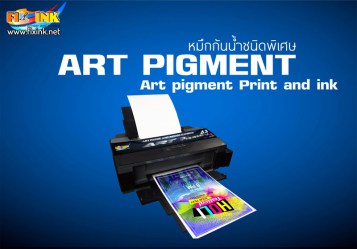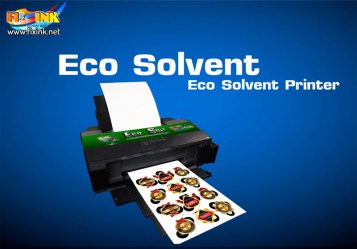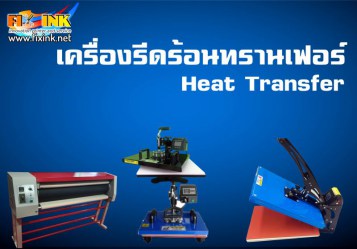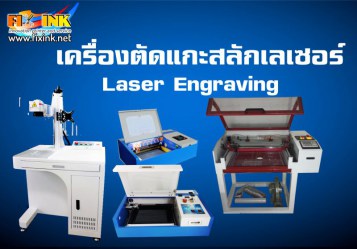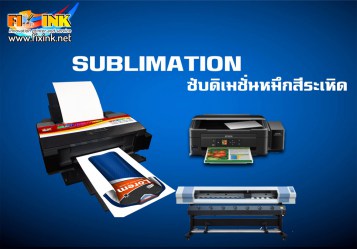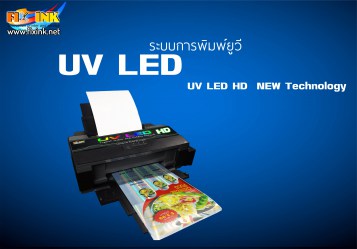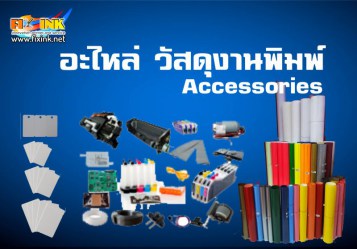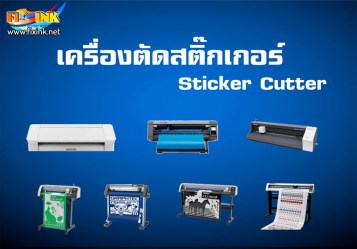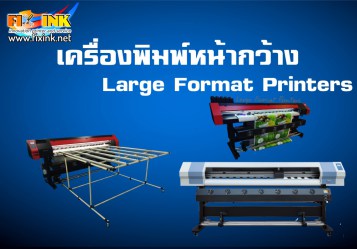เทคโนโลยี CCD ให้ผลงานการสแกนที่แตกต่างกันอย่างสิ้นเชิงได้อย่างไรสแกนเนอร์ของเอปสันใช้คุณสมบัติความไวแสงของชิป CCD ในการจับภาพและแปลงข้อมูลแสงในภาพให้เป็นไฟล์ดิจิตอล สิ่งที่ได้จาก CCD คือ ทำให้ภาพนั้นมีคุณภาพดีขึ้น ความไวแสงของสแกนเนอร์ดีขึ้น ลดสัญญาณรบกวนในภาพ และช่วงไดนามิคที่กว้างยิ่งขึ้น
ความแตกต่างของเทคโนโลยีสแกนเนอร์แบบ CCD กับ CIS คืออะไร
-
ความแตกต่างอยู่ที่วิธีการฉายแสง การสะท้อนแสง การส่ง และการรับแสงของเซนเซอร์ ในสแกนเนอร์แบบแท่นที่ใช้เทคโนโลยี CCD (Charge-Coupled Device) แสงจากแหล่งกำเนิดแสงซึ่งปกติคือแสงจากคาร์โธทแบบเย็น จะสะท้อนที่ต้นฉบับ แล้วถูกหักเหด้วยกระจกเงาและรับเข้าตัวเซนเซอร์ผ่านทางเลนส์ ซึ่งประกอบด้วยอีลีเมนต์ CCD ที่มีคุณสมบัติจับแสงจำนวนมาก ในบางระบบ อีลีเมนต์ CCD เหล่านี้ อาจมีไมโครเลนส์วางอยู่หน้าไดโอดทุกๆ ตัวเพื่อการจับแสงที่มีประสิทธิภาพมากยิ่งขึ้น
-
สำหรับเทคโนโลยี CIS (Contact Image Sensor) แสงจาก LED สี RGB (แดง เขียว น้ำเงิน) จะถูกสะท้อนออกมาจากต้นฉบับ จากนั้น แสงนั้นจะถูกส่งผ่านชุดเลนส์จำนวนหนึ่งโดยตรง แล้วไปตกที่เซนเซอร์ภาพซึ่งเป็นได้ทั้ง CCD หรือ CMOS เทคโนโลยีทั้งสองชนิดนี้ ต่างมีข้อดีของตนทั้งคู่ โดยทั่วไป ระบบ CIS ช่วยให้สามารถผลิตเครื่องที่มีขนาดเล็กกว่า กินไฟน้อยกว่า ในขณะที่ระบบ CCD ให้ความชัดลึกมากกว่า ความเร็วการสแกนและอัตราส่วนการรบกวนสัญญาณสูงกว่า ให้ความเที่ยงตรงของสีดีกว่า ผลที่ได้คือ คุณภาพดีกว่า และสแกนได้มากกว่า
-
จากการวางจำหน่ายสแกนเนอร์สำหรับผู้บริโภครุ่นใหม่ เช่น Epson Perfection V10 เอปสันประสบความสำเร็จในการผสมผสานระบบการสแกนแบบ CCD คุณภาพสูงเข้ากับรูปทรงเครื่องที่บางกะทัดรัดได้อย่างลงตัว
เหตุใดเราจึงใช้ระบบไมโครเลนส์กับสแกนเนอร์ Epson Perfection?
-
อีลีเมนต์ของเซนเซอร์ CCD แต่ละชิ้น หรือโฟโตไดโอด จะมีพื้นที่เฉพาะที่ไวต่อแสง หากเราสามารถทำให้แสงที่สะท้อนจากต้นฉบับพุ่งตรงไปยังพื้นที่ที่ไวต่อแสงดังกล่าวได้ ก็จะเพิ่มความไวในการรับแสงโดยรวมของระบบได้ ซึ่งจะเพิ่มปริมาณการสแกนและลดสัญญาณรบกวนได้ และเราได้ประสบความสำเร็จในการค้นพบวิธีที่ต้องการดังกล่าวโดยการใช้ระบบไมโครเลนส์ที่ช่วยให้รวมแสงไปยังจุดที่ไวแสงมากที่สุดได้ นั่นคือ ส่วนตรงกลางของโฟโตไดโอด
เทคโนโลยี CCD คู่ของเอปสันคืออะไร?
-
ส่วนที่มีความไวต่อกระแสไฟฟ้า (ความสามารถในการแปลงแสงให้เป็นแรงดันไฟฟ้า) ของอีลีเมนต์ CCD แต่ละอีลีเมนต์นั้น บริเวณตรงกลางจะอยู่สูงกว่าบริเวณขอบ นั่นเป็นเหตุผลว่าทำไม สแกนเนอร์ของเอปสันจึงมีเซนเซอร์ CCD ที่ประกอบด้วย CCD สองแถวที่เอียงเข้าหากันเล็กน้อย ด้วยวิธีนี้ ภาพสแกนที่ได้จะมีความละเอียดสูง และทำให้ความไวแสงของทั้งระบบดียิ่งขึ้น
ทำไมอีลีเมนต์ที่มีขนาดใหญ่กว่าจึงมีความไวแสงมากกว่า?
-
ตามหลักการ เราสามารถเปรียบเทียบหลักการนี้กับหินปูพื้นขนาดเล็กกับขนาดใหญ่ เมื่อฝนตก หินปูพื้นขนาดใหญ่จะถูกเม็ดฝนตกกระทบมากกว่า เนื่องจากมีขนาดพื้นที่ใหญ่กว่า ในทำนองเดียวกัน เซนเซอร์ที่ใหญ่กว่าสามารถรับแสงได้มากกว่า จึงมีความไวในการรับแสงมากกว่า ความไวแสงที่มากกว่านี้เป็นองค์ประกอบที่สำคัญอย่างยิ่งของอัตราส่วนสัญญาณรบกวนของแสง และมีผลให้ความเร็วการสแกนเร็วขึ้น
-
How does CCD technology deliver a completely different scan result? Epson scanners use the light sensitivity feature of CCD chips to capture and convert the light data in the image into digital files. What we get with CCD is that the image quality is better. The sensitivity of the scanner is improved. Reduce noise in the picture. And a wider dynamic range
What are the differences of CCD scanner technology with CIS?
The difference lies in the way the light is projected, reflected, transmitted and received by a sensor. In a flatbed scanner using CCD (Charge-Coupled Device) technology, light emanates from a light source, usually cold carotid light. Will reflect the original Then be refracted by a mirror and get into the sensor through the lens. These CCD elements contain a large number of light-sensing CCD elements. In some systems, these CCD elements may have microlens placed in front of every diode. For more efficient light capture
For CIS (Contact Image Sensor) technology, light from an RGB (red, green, blue) LED is reflected from the original, then it is transmitted directly through a series of lenses. And then fall to the image sensor, which is either CCD or CMOS, both of these technologies Both have their advantages. In general, the CIS system allows the manufacture of smaller machines. It consumes less power while the CCD system offers more depth of field. Higher scanning speed and signal noise ratio Provides better color fidelity, the result is better quality and more scanning.
With the release of a new generation of consumer scanners such as the Epson Perfection V10, Epson has successfully combined a high-quality CCD scanning system with a slim and compact body.
Why do we use a micro lens system with our Epson Perfection scanners?
Each CCD sensor element or photodiode There will be specific areas that are sensitive to light. If we can cause the light reflected from the original to direct it towards the sensitive area Will increase the overall sensitivity of the system This will increase the scan volume and reduce noise. And we have succeeded in discovering such a preferred method by using a micro-lens system that allows light to be concentrated in the most light-sensitive area, the middle part of the photodiode.
What is Epson's dual CCD technology?
Electrically sensitive part (The ability to convert light to voltage) of each CCD element that element The middle area is higher than the edge. That's why Epson scanners have a CCD sensor composed of two rows of CCDs that are slightly tilted together. In this way, the scanned images are obtained with high resolution. And makes the light sensitivity of the whole system even better
Why are larger elements more photosensitive?
In principle, we can compare this principle with small to large paving stones. When it rains, larger paving stones are more affected by raindrops. Because it has a larger area Similarly Larger sensors can receive more light. Therefore has a greater sensitivity to light This greater sensitivity is a very important component of light noise ratio. And resulting in faster scanning speed




